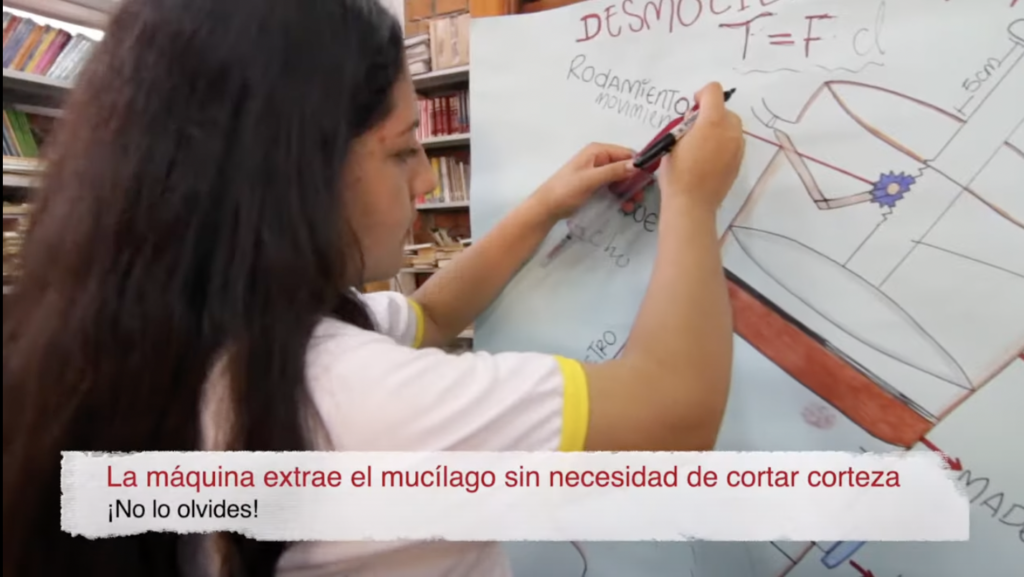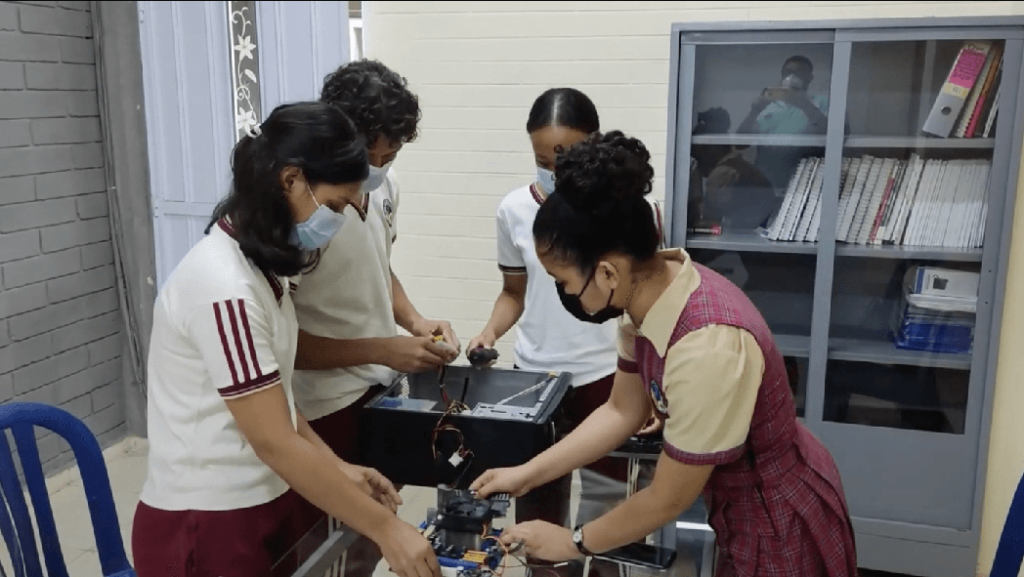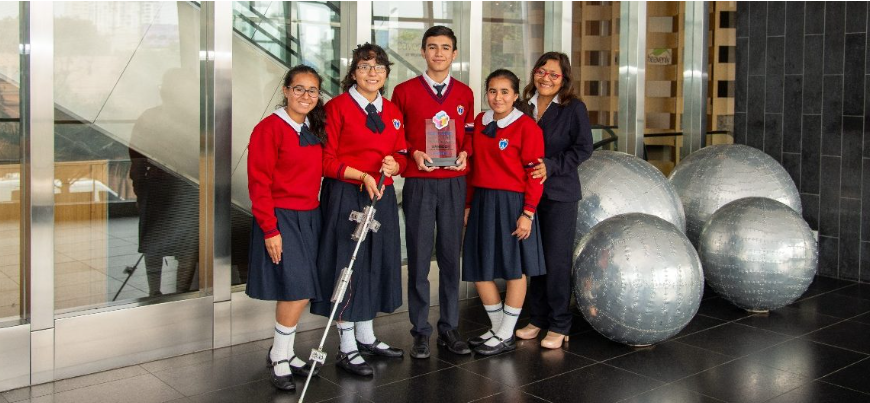Project gallery

YASU: robotic system for rapid emergency response
Report sent by the Teacher
Ileana Cristina Caballero CarrilloSchool
Instituto David David, Chiriquí, PanamaProject team composition
Cristofer Levy, Daniel De Roux, Duncan Cazorla, Melanie Fernández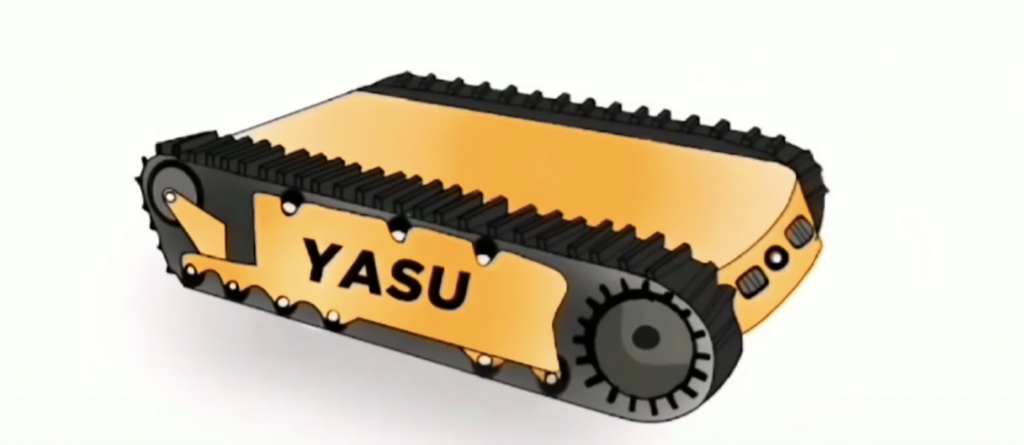
Age of students
15 to 17 years oldOther areas of knowledge
Languages (Portuguese, English, Spanish, native languages, etc.), Geography, Arts (visual arts, film, music, etc.)Project duration
One semesterSoft skills
Collaboration, Communication, Creativity, Critical thinkingSTEM areas
Engineering, Math, Sciences, TechnologyEmpathy: learning from people’s values and needs
Project objective, problem to be solved, and main actions
The main objective of the project was to create a robotic system based on artificial intelligence, which generates a dashboard as visual information management, to support decision-making with preventive actions in the management of events resulting from floods or landslides in prone areas. In addition to facilitating work during and after the event, through the use of robots specialized in searching and mapping areas.
The main question we wanted to answer was: How to solve the needs of communities that, because they are close to rivers and eroded hills, are at risk of floods and landslides?
We identified the problem by interviewing organizations related to situations such as victim rescue, risk prevention management, and support for affected communities, among others. It was suggested to watch videos of journalists covering different types of natural disasters that occurred in the province of Chiriquí or the country.
Because there are several entities linked to our proposal, we tried to determine to which organization the project would be directed, and for that, the director of the Civil Protection system of Chiriquí was interviewed, so that he could explain to the young people what the processes involved in the moment of a natural disaster. The authorities of the Fire Department of the City of David were also interviewed and it was also investigated how the Emergency Medical system in the country worked.
As a result of the interview with the regional director of SINAPROC, we received awareness training and a field trip that allowed us not only to know the reality of the communities identified as at risk but also to know the management of the National Civil Protection System and how they are conducted to prevent and mitigate the risks of natural disasters. Once the processes involved in disaster management related to the proposed challenge were identified, a new proposal was then reformulated and adjusted, based on the reality and needs of both the organization and the communities that would benefit.
They were guided in the presentation of ideas and the contest. If the idea was accepted, they worked collaboratively (my initiative was to motivate them to participate and guide them in the robotics classes and club; they accepted the challenge).
Definition: better understanding of the challenges
Deepening into the issue and involvement of the school and local community
For a better understanding of the problem, the students had to do the following:
- Bibliographic review of the management of natural disasters by the sister countries of Central America and Spain based on documents published by government agencies.
- They analyzed the existing solutions in these different countries and especially in ours, to establish a viable proposal adjusted to the reality of the region; in this case, the province of Chiriquí.
- The students made a technical visit organized by SINAPROC and the person responsible for risk prevention of this organization took them to the areas identified at risk due to floods, landslides, and international seismic areas.
In the Bambito Community area, young people were able to hear live from people in the community about their experiences when there was a flood and they were left homeless. All these actions served as a guide to improve its proposal and adapt it to the reality of our communities and especially the institution that would be the host company of the project.
The school’s management supported us in the dissemination of the virtual voting proposal, and efforts to conduct field trips and interviews on radio and television.
The family members supported the young people in the transfer during the development of the project, in addition to motivating them and believing in what they were doing. Classmates created a support committee for virtual voting.
The Technological University of Oteima supported with training in data analysis Arcgis 123 for the creation of a Dashboard. SINAPROC trained my students in risk prevention and management; they observed the identified places such as floods, landslides, and seismic areas on an excursion.
Ideation: developing creative solutions
The development of the solution
1. We review the variables to be measured
2. It was analyzed whether the objectives were following the expected results
3. The potential client and the communities with the problem were visited to adapt the project to the real needs or requirements.
4. Young people interviewed firefighters, and emergency personnel to learn about rescue work. At this point, they reviewed the design thinking methodology.
5. Upon becoming aware of relevant information, the proposal was reformulated and adjustments were made to the prototype to be presented. And they realized that the proposal did not fall.
6. It is determined that this project was a social technological enterprise, choosing SINAPROC, the governmental entity responsible for the prevention and mitigation of risks.
7. Next, potential investors or sponsors and the return on investment are analyzed.
8. Subsequently, the channel for launching the prototype is established.
9. They are trained in the necessary software for 3D design, circuit creation, and simulation, C programming, ARCGIS 123 for data analysis, and video editing software, among others.
10. They researched materials and elements to create the robot and obtain a viable budget without compromising the quality of the final product.
Prototype: making ideas tangible
The construction of the prototype
The prototype was presented to SINAPROC by video and broadcast on national radio and TV.
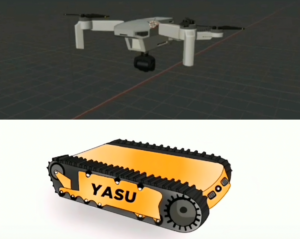
Test: putting ideas out into the world
Evaluation of the process and the developed solution
A brainstorm was made, the quality of the product was discussed and it was presented to the risk prevention specialist to evaluate and give us his impressions.
Reflections and pedagogical practices
The value of participating in Samsung Solve for Tomorrow
We learned the use of new methodologies to develop project proposals. Advising my students and working collaboratively and in a planned way has opened a panorama of opportunities for them and it is gratifying to see how they integrate their knowledge, become creative, research, and, most beautifully, develop a solution for their environment.
Achievements and advances perceived by the teacher, throughout the process
Watching my students embrace the challenge with passion, seeing how they grow and develop an idea to success.
Challenges faced
Convince and motivate them to believe in themselves and their proposal. What I would change would be to add the process of building the prototype and validating the tests, since at that time my country was in quarantine, and the Ministry of Education together with the Ministry of Health prohibited students from accessing school facilities to avoid contagion.
Learning incorporated into the teacher’s routine and practice
The methodology of generating ideas based on the needs of the environment and then discriminating according to feasibility and the possibility of bringing it to reality.
#Schedule
Solve for Tomorrow is present in several countries in the region.
In each place, the program follows a specific schedule and rules, adapting to the local reality. Visit your country's website.
